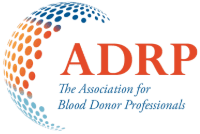Young apheresis platelet donors show significant and sustained growth over the last decade in the US, 2010–2019: A favorable sign of the resiliency of the platelet supply
Authors
Baia Lasky, Umesh Singh, Pampee P. Young
Abstract
Background
Platelet demand continues to rise and US hospitals frequently face shortages. The peak median age of apheresis platelet donors (APD) is believed to have increased over the last decade, raising concerns that the APD base is not being adequately replenished with young donors.
Study Design/Methods
American Red Cross (ARC) apheresis platelet collections were evaluated from calendar years 2010 through 2019. APD, products per procedure/split rate (PPP) and donation frequencies were stratified into age groups.
Results/Findings
The number of unique APD from calendar year 2010 through 2019 in the ARC donor pool increased from 87,573 to 115,372 donors, representing a 31.7% overall growth. Donors in the 16–40 year-old (y) age group increased by 78.8% overall, with the largest absolute increases seen in the 26–30 y (4852 donors, 99.9% growth), followed by the 31–35 y (3991, 94.1%) group. Donors aged 56+ increased by 50.4% overall, with the largest increase seen in the 66–70 y (5988 donors, 108.1% growth) group. Middle-aged donors, aged 41–55 y, demonstrated a decrease of 16.5%. Over the last decade, the youngest age groups (16–40 y) comprised 61.3% of first-time donors (FTD). Annual donation frequency increased with increasing age and PPP. The highest donation frequencies were seen in the oldest age groups.
Conclusion
Although the peak median age of APD increased over the study period, relative contribution of the 16–40 y APD base also increased. Older donors exhibited the highest donation frequencies and thus contributed the largest volume of apheresis platelet units. Platelet donor activity declined in the middle age (41–55 y) group.
April 26, 2023
Related Resources
Engaging blood donors as advocates Social media preferences and associations with marketing
Background: Various critical medical procedures would become impossible without blood donations—saving lives in emergencies, surgeries, and chronic conditions like thalassemia. Therefore, it seems crucial to enhance donor recruitment and ensure…
Rethinking the role of older donors in a sustainable blood supply
INTRODUCTION Many countries, particularly high human development index countries, are facing the challenge of an aging population.1 For Blood Collection Agencies (BCAs) in these countries, an aging population poses two…


